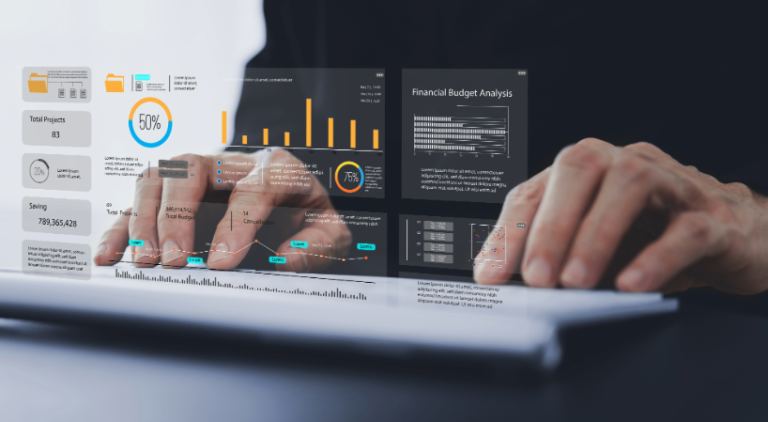The Ultimate Guide to Different Types of ERP
Did you just find out that it is time that your organization needs an ERP system? Well, before you move on to selecting an ERP vendor, do you know that there are different types of ERP?
A Brief History of ERP
ERP in its first form was a tool for material resource planning. Later it developed to accommodate major other functions like accounting, human resource management, customer relations, project management, and other ERP modules.
Previously ERP systems worked only within offices, with the software installed on a client computer. With the coming of the internet, ERP now lets individuals work from anywhere across the globe. The evolution of ERP has been phenomenal. At present, different types of ERP are available in the market. Organizations can choose the best depending upon their size and specific goals.
When we try to understand the types of ERP, the simplest categorization will be that of ERP for small businesses, medium-sized businesses, and large enterprises. There are also industry-specific ERPs to cater to the specialized needs of each industry.
Here, we will discuss a more generic classification, based on the mode of deployment that applies to all organizations, big or small, belonging to all industries.
What do you mean by mode of deployment? Mode of deployment refers to how the software is installed, configured, and made available for the end-users to work on. In our context, what matters is where the software & database is installed and how is it accessed.
Different Types of ERP
Based on the mode of deployment ERP can be categorized into 3 types:
- On-premise ERP
- Cloud-based ERP
- Hybrid ERP
On-premise ERP Software
As stated before the key factor here is where the software is installed. On-premise ERP software, as its name indicates is installed locally, in the client’s own hardware and servers. The software license is owned by the company. The complete control of the ERP system and its maintenance are in the hands of the company. It cannot be accessed over the internet, you need to be physically present at the location where it has been installed to use the software. On-premise ERP is the traditional ERP and is widely used by organizations across the world.
Cloud-based ERP Software
Here, the software is installed on a cloud platform and you access the software over the internet. The cloud platform where the software is hosted is mostly owned and managed by a service provider. As a user, you do not own the software, nor any hardware but pay a subscription fee monthly/annually for using the software. It is a pay-as-you-go model because you pay for the service. Hence cloud ERP is also called as SaaS model – Software as a Service.
Within cloud-based ERP, we can still have single-tenant Cloud ERP and multiple-tenant cloud ERP. In a multi-tenant model, a single instance of the software is shared by multiple organizations. This means you share the hardware and sometimes the database with other organizations. You will have user credentials to access the part of hardware dedicated to your organization.
In a single-tenant model, each organization will have its own instance of the ERP application. You get dedicated hardware. In both cases, organizations do not really own any hardware. But the software is hosted on a cloud platform.
Hybrid ERP
On-premise ERP and Cloud-based ERP have their own benefits and challenges. We shall look into such details shortly. Well, organizations sometimes face the dilemma to choose between a complete on-premise ERP software and a complete cloud ERP.
For example, a large organization may have a legacy ERP system. They now want to start an e-commerce platform. They need to have a cloud solution, but at the same time depend on the on-premise ERP software for accounts and inventory. In this case, they can have their e-commerce application on the cloud and integrate it with their legacy ERP system. Here is a mix of on-premise and cloud systems, hence called hybrid ERP.
Hybrid ERP is of great help to large enterprises who already have long been using highly customized on-premise ERP systems, but want more agile and affordable solutions to meet their new requirements.Now having understood the different types of ERP you could be still wondering how to select an ERP system that suits your organization.
Comparing On-premise ERP & Cloud-based ERP
When you are about to select an ERP software for your organization there could be many factors to think about, like cost, features, data security, etc. Let us now look at some of them.
Cost
When implementing an on-premise ERP software the organization has to pay for the software license and set up the required infrastructure. This cost comes up front and is a significant amount. Cloud-based ERP on the other hand comes with a subscription model. You only need to pay small figures monthly/annually as you use the service.
However, ERP is something organizations cannot stop using someday in the near future. Hence paying a subscription over many years could be as expensive as owning an ERP software license in the first place.
In short, on-premise ERP could be a costly business at the first look but if you choose the right ERP it will turn out to be an asset for you.
Customizable Features
On-premise ERP allows unlimited customization. Whereas Cloud ERP (multi-tenant) has severe limits on customizable features. This is because when a software instance is shared by multiple users, Cloud ERP can offer only a standard product that fits all.
Hence if you are an organization that requires highly customized process flows, a multi-tenant cloud is definitely not your choice. However, a single-tenant cloud ERP can solve this issue. But it could be more expensive to maintain.
Having said that, a cloud ERP software can be quickly deployed and its performance is rated better than the traditional on-premise ERP.
Maintenance and Updates
Software maintenance is a critical part of a software life cycle. In traditional ERP, maintenance activities include all activities done post-implementation to use the software to its fullest. It includes feature corrections or enhancements from the client-side, user support, and software updates from the vendor’s side. It also includes maintaining the hardware infrastructure.
In cloud ERP, the maintenance of the hardware is completely the vendor’s responsibility and will be done free of cost. Software updates are done periodically and they get reflected on the user’s end automatically.
In the case of on-premise ERP, the software is owned and hosted by client organizations. It is totally their responsibility to maintain the hardware infrastructure. Software updates, user support, and feature modifications will be done by the software vendor, but they could be chargeable under the annual maintenance cost.
Data Security
Data security is a critical area of concern while implementing ERP software. This is because ERP contains all your data and that of your customers. In on-premise ERP, data rests within the organization. For the cloud, data security is in the hands of the cloud service provider. However, service providers take strict measures to secure your data.
You might now know how to select an ERP system.
If you are a small organization or a growing organization and follow standard process flows a cloud ERP with a multi-tenant environment will fit you well. You can save yourself from spending bulk money. Also, ERP implementation will be done in a matter of hours.
If you are a large organization and require a highly customized solution, on-premise ERP could be a better choice. You can still go for a private cloud or single-tenant cloud environment. Cloud ERP also offers the flexibility of accessing the software anytime from anywhere in the world. Businesses are increasingly moving towards more agile and flexible solutions, hence cloud solutions. Further, if you already have a legacy system but want to have an ERP in certain areas, you can scale up using a cloud ERP.
Get Started with PACT ERP Solution - United Arab Emirates
If you are not able to take a decision yet, talk to an ERP expert. We have come across thousands of clients and we understand the dilemma faced by customers. Because it is often hard to get a solution that both matches your requirement and fits within your budget.
For this reason, at PACT we offer budget-friendly ERP solutions both on-premise and on the cloud. The modular ERP offered by PACT can be customized to meet the requirements of various industry verticals like Trading & Distribution, Manufacturing, Real-estate, Construction, etc. Furthermore, PACT offers solutions based on the size of the businesses – for small, medium & large enterprises.
With our 25 years of ERP experience, PACT understands the evolving needs of customers. And we strive to help common businessmen achieve more by utilizing technology.
To know more about transforming your business processes, Contact us or Book a Demo Now.






